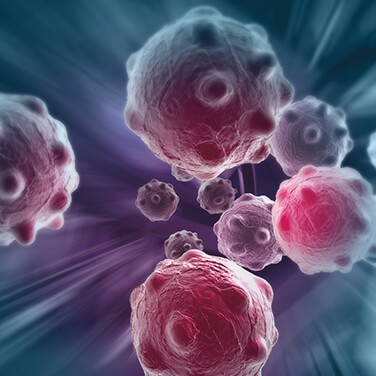Fighting Cancer with Cancer
By Gina Wynn
Scientists have discovered a new way to fight cancer by developing cancer cells that destroy other cancer cells.
In recent studies, researchers have been able to reduce the size of tumors in mice by engineering their cancer cells with a gene-editing technology called clustered regulatory interspaced short palindromic repeats (CRISPR). In conjunction with its associated protein Cas9, CRISPR uses RNA as a guide to locate a specific section of DNA. When the target section has been identified, an enzyme binds to the DNA and either removes or replaces the undesired gene.
Cancer Cell “Weapons”
For the studies at Brigham and Women’s Hospital, researchers at Harvard Medical School in Boston used their knowledge of cancer cell behavior to turn cancer cells into weapons. They took advantage of a cancer cell's instinct to return to its tumor of origin when introduced into a person’s bloodstream.
Using the CRISPR/Cas9 technology, scientists altered the cancer cells so they would secrete a toxic protein when they encountered other cancer cells within a tumor. The protein, called S-TRAIL, is effective at destroying a variety of cancer cells without being particularly harmful to healthy cells, which made it a good choice for the experiments.
Secret Super Power
Although other scientists have experimented with the use of cancer cells to destroy other cancer cells, the CRISPR/ Cas9 method has a differentiating feature — it causes cancer cells to self-destruct before they begin to produce new tumors. According to Renata Pasqualini, PhD, a cancer biologist at Rutgers Cancer Institute of New Jersey in Newark, the self-destruction occurs because the CRISPR-based technology adds resistance or sensitivity features to the parental cells.
In the study, scientists used glioblastoma (brain cancer) cells that were both resistant and sensitive to S-TRAIL. In the sensitive cells, they removed the genes that trigger sensitivity before injecting the protein-producing genes. Both types of cells produced similar results.
Encouraging Results
In each case, the engineered cells shrunk the tumors in the mice that received the treatment, and the mice lived longer. The tumor size stayed the same in mice that weren’t treated.
But scientists have more work to do before the CRISPR/Cas9 approach can be introduced into a clinical setting, says study coauthor Khalid Shah, MS, PhD, stem cell researcher at Brigham and Women’s Hospital in Boston.
For instance, extremely sick patients might not have the time currently required for their cancer cells to be genetically engineered and used as a therapy. And while the use of stored standard cells might allow for more prompt treatment, the possibility that a patient’s body could reject those cells as foreign may present another hurdle to be overcome.
